Year 5 Learning from Home Week 7 Term 3
Week beginning - 31 August 2020
This week we will be creating an oral artefact to demonstrate what we have learned about Australian Federation.
We will be writing rhyming poetry and investigating different genres of fiction in Reading.
We’re beginning a unit on multiplication for Maths, and in Science we will begin designing experiments that demonstrate the properties of a state of matter. Phew…another great week!
Webex Schedule
Below is a list of the work you will need to complete and bring along to our Webex session:
Monday: Learning from Home plan (Reviewing)
Tuesday: Writing - ‘Create a Rhyming Bank’ (Introducing)
Mathematics – Repeated addition and skip counting (Introducing)
Wednesday: Reading - ‘Fiction Genres’ lesson (Reviewing)
Thursday: Inquiry - ‘Federation Oral Artefacts’ (Reviewing)
Friday: Self-reflection
Inquiry - ‘Federation Oral Artefacts’ (Reviewing)
Writing - ‘Rhyming Poems’ (Reviewing)
Wellbeing
SEEKING HELP - WHO TO TURN TO AND WHO TO THANK: (30 minutes)
Learning Intention:
We are identifying people who we can turn to when we need help and ways in which we provide help to others
Task:
‘Stars’ are people who achieve great things, such as sports and performance stars. They draw a lot from the help of others such as family, coaches and teammates. Helping and supporting each other is how we can all be great.
Who do you feel supported by?
Who can you support?
Draw three big stars in your workbook or on paper. For each star record 5 people who:
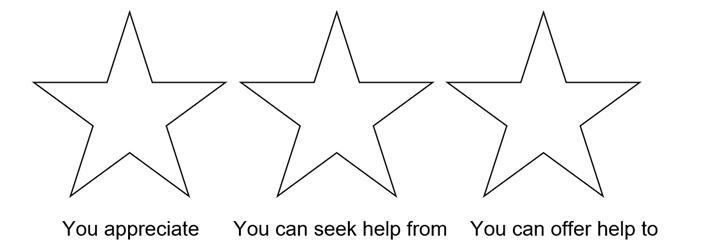
Challenge:
Make a thank you note for someone whose contribution you appreciate and send it to them
(remember to be cyber smart and check with your parents before sending emails).
Be specific, what did they do that helped you? How did it make you feel?
Reading
Continue to read every day and record your reading to share with your teacher.
You have been set texts to read in Bug Club and you can access many more books in Epic!
Now that we have Google Classroom up and running, we would like to use it to track your weekly reading.
On Friday, upload your weekly reading log on Google Classroom.
Record the reading you do each day, including the title, author, source (Epic! Bug Club, etc.) and number of pages of each book.
FICTION GENRES: (40 minutes)
This session will be reviewed during Webex Essential on Wednesday
Learning Intention:
We are identifying different types of fiction text genres
Task:
Log into ClickView and watch this video - ‘Scoop Private Eye’ about fiction text genres.
After watching:
- Write a list of the genres you remember Scoop finding and a short description for each.
- Create a table showing a list of genres from your favourite to your least favourite fiction genre.
- What were the features of fictional texts that Scoop found?
Keep your list of features, as you will use it in the following lessons.
REALISTIC FICTION: (20 minutes)
Learning Intention:
We are identifying the features of realistic fiction
Task:
Realistic fiction is a genre of stories that are made up but could very well happen in real life. These stories often take place in settings familiar to you, such as at school or in an ordinary suburb. This attribute, makes them more relatable.
- Go to Epic! and look for the books assigned to the ‘Realistic Fiction’ library collection.
Read through one or more titles. - Using the list of features you identified from the Scoop video in the ‘Fiction Genres’ lesson, describe examples of how those features appear in Realistic Fiction. (Refer to the answer section to double check your list of features).
HISTORICAL FICTION: (20 minutes)
Learning Intention:
We are identifying features of historical fiction.
Task:
Historical fiction transports readers to a time and place from the past. It often teaches us some real facts about that time in history through a made up story. The setting should be historically accurate, but the characters and events will generally be fictional.
- Go to Epic! and look for the books assigned to the ‘Historical Fiction’ library collection.
Read through one or more titles. - Using the list of features you identified from the ‘Scoop Private Eye’ video in the ‘Fiction Genres’ lesson, describe examples of how those features appear in Historical Fiction.
(Refer to the answer section to double check your list of features).
Writing - Poetry:
This lesson will be introduced during Webex Essential on Tuesday.
CREATE A RHYMING BANK: (40 minutes)
Learning Intention:
We are creating a bank of rhyming words to help us write our poems
A rhyme is the repetition of the same or similar sounds of two or more words, often at the end of the line. For example: ‘Miss Cook’ rhymes with ‘Reads a book’.
Log in to ClickView and watch this video in which examples of rhymes are highlighted in the book ‘Pig the Pug’ by Aaron Blabey.
Task:
To create rhyming poems, we need to be able to find rhyming pairs relevant to our topic.
List three or four topics that you would like to write poetry about over the next two weeks.
For each, list as many pairs (or more) of words that rhyme that you can.
They should be linked closely to the topic.
For example: Topic - Dogs. Rhyming words - bone and alone, fleas and please, scratch and catch, canine and feline.
RHYMING POEMS: (40 minutes)
This lesson will be reviewed during Webex Essential on Friday.
Learning Intention:
We are learning to create rhyming poetry
A rhyming poem has the repetition of the same or similar sounds of two or more words. This usually occurs at the end of the line. Watch an example on Storybox Online - The Ghost of Miss Annabel Spoon.
Poems have a rhyming pattern, which can be described using letters.
The following poem is AABB, as the first two lines rhyme, and the last two rhyme.
The freshening feel of an ocean breeze, (A)
The colours of change in the leaves on the trees, (A)
The feeling of peace as the days go by, (B)
Life’s a dazzling puzzle and we don’t know why. (B)
An example of a poem that is ABAB would be:
The people along the sand (A)
All turn and look one way. (B)
They turn their back on the land. (A)
They look at the sea all day. (B)
Task:
Choose a rhyming pattern (AABB, ABAB, AABBCC, or experiment with your own) and write a rhyming poem on a topic of your choice. There can be as many lines as you like, as long as they rhyme.
Success Criteria:
I can match rhyming words
I can follow a rhyming pattern
I can choose words that are expressive and descriptive
Choose your best Rhyming Poem from this week to upload to Google Classroom by 1 pm on Friday.
Challenge: Read ‘Rhyme Stones’ on Epic! to see and hear more rhymes.
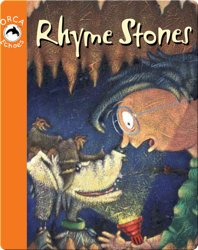
FATHERS’ DAY POEM: (40 minutes)
Learning Intention:
We are expressing our gratitude to an important role model in our lives through poetry
Task: Create a Fathers’ Day Poem for your father, or a special adult in your life
(e.g. grandparent, uncle or aunt, sibling, carer, coach, mother, teacher).
Include:
- What you like about them
- The values they show
- Things they do to help you
Don’t forget to give it to them on 6 September!
How will you present your poem to them?
You could read it aloud, create a beautiful card, call or video call to read it, or email them.
WRITING FOR INQUIRY: (40 minutes)
Learning Intention:
We are using an oral presentation to demonstrate our understanding of early Australian history.
Task:
This week’s inquiry lesson will require some extra time.
Refer to this week’s inquiry lesson below and use some of your writing time to complete the task.
Spelling
RHYMING WORDS: (30 minutes)
Learning Intention:
We are finding rhyming words
Task:
A phonogram is a combination of letters that makes a sound.
These spelling patterns can help us to discover rhyming words for our poems. Sometimes one sound can be made by different phonograms (e.g. ‘high’ and ‘sky’ both have an ‘eye’ sound but use different spelling patterns).
Sign into ClickView and watch this video about Rhyming Poetry.
By replacing key words in a sentence with other rhyming words, you can change the meaning and make a sentence funny.
Rewrite the poem below at least two times. Each time replace at least six words with rhymes that change the meaning but still make sense in the sentence. This might end up being quite funny!
Remember that you don’t have to use the same spelling pattern for each sound.
Underline or highlight the phonogram in each word that you are rhyming.
Then make a list of the phonograms that you have discovered which make the same sound.
Twinkle, twinkle, little star,
How we wonder what you are.
Up above the world so high,
Like a diamond in the sky.
When the glorious sun has set,
And the grass with dew is wet,
Then you show your little light,
Twinkle, twinkle, all the night.
When the golden sun doth rise,
Fills with shining light the skies,
Then you fade away from sight,
Shine no more 'till comes the night.
Mathematics
FLUENCY - Before starting Maths each day, practise skip counting starting from a number other than zero.
- You will need either dice or a pack of cards.
- Roll or draw two numbers. One will be the starting number, the other will be the number you skip count by.
For example, if I roll a 4 and a 6, I could start at 6 and count by 4. i.e. 6, 10, 14, 18, 22, 26 etc.
REPEATED ADDITION AND SKIP COUNTING: (40 minutes)
This lesson will be introduced during Webex Essential on Tuesday.
Learning Intention:
We are linking addition and multiplication
Task:
Multiplication can be thought of in many different ways, but one of the simplest is as repeated addition.
When we say ‘Three times four’ (3 x 4), we are also saying 4 + 4 + 4.
For the equations below, write the matching multiplication or repeated addition equation.
For example: 5 x 2 = 2 + 2 + 2 + 2 + 2
3 x 5 5 x 3 6 + 6 + 6 + 6 4 + 4 + 4 + 4 + 4 + 4 7 x 2 8 + 8 + 8 + 8
We can use repeated addition to create skip counting number patterns. Each new step in the pattern is made by adding one more of the number being multiplied.
|
Repeated Addition |
5 + 5 |
5 + 5 + 5 |
5 + 5 + 5 + 5 |
5 + 5 + 5 + 5 + 5 |
5 + 5 + 5 + 5 + 5 + 5 |
|
Skip Counting |
10 |
15 |
20 |
25 |
30 |
When looking at the pattern 24, 28, 32, 36 find the difference between 24 and 28. This is 4.
Check it against the difference between the other numbers. This is also 4.
The pattern is increasing by adding 4 repeatedly.

Look at the number patterns below, and describe which number is being added repeatedly.
They may not all have started at zero!
24, 32, 40, 48, 56, 64, 72
66, 77, 88, 99, 110, 121, 132
4, 7, 10, 13, 16, 19, 22
11, 17, 23, 29, 35, 41, 47, 53
For each of the numbers below, create a number pattern by repeatedly adding/skip counting the number at least six times.
You can start from any number.
4 7 9 13 17
VISUALLY MODELLING MULTIPLICATION - ARRAYS: (40 minutes)
Learning Intention:
We are modelling multiplication using arrays
Any multiplication problem can be shown as an array.
An array is a rectangle, where the number of rows and columns represent the factors in the equation
(the numbers being multiplied i.e. 3 x 6 = 18; 3 and 6 are the factors).
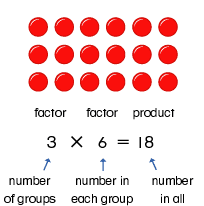
Task:
Practise using arrays to represent multiplication by creating an Array City.
- You can make it using paper, create it on the computer using an illustration program such as Paint or even make it from blocks or LEGO and take a photo
- Each building will be a separate array
- Make at least ten buildings/arrays. Your array could be other features in the city, such as a stadium or park
- Be creative with your array city!
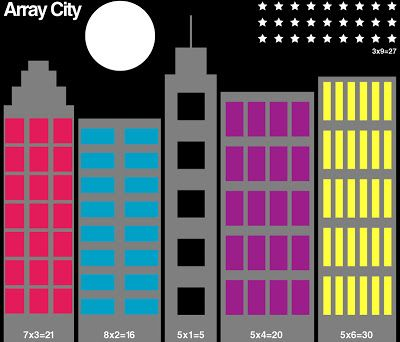
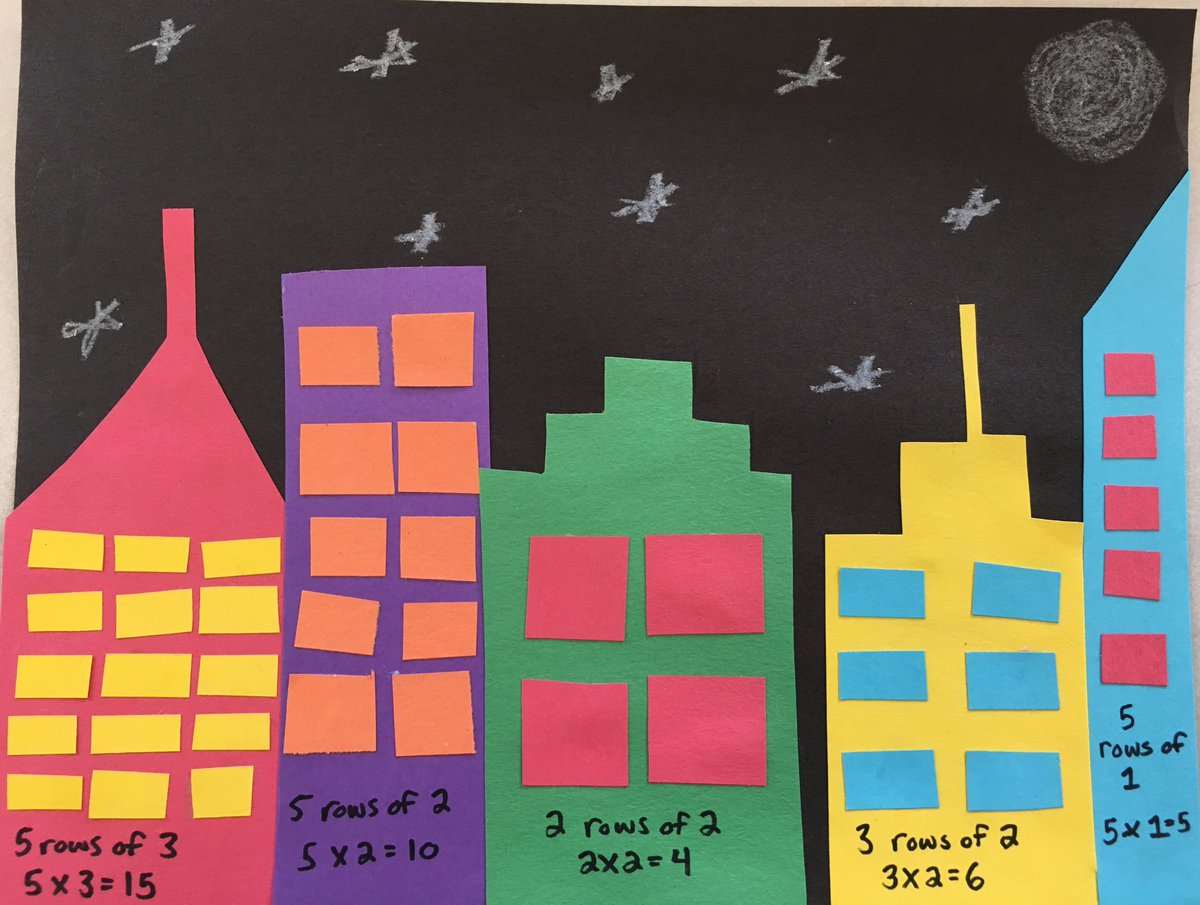
Challenge:
Draw up a grid of 20 by 20 squares in your book.
- With a partner, take turns rolling two dice
(or alternatively, write the numbers 1-6 on pieces of paper and draw two out of a cup). - These numbers will determine the array you colour in on the grid.
For example, if you roll a 2 and a 5, then you draw an array with 2 rows and 5 columns, making a product of 10 squares. - For every square you colour, you score one point.
- Take turns until you run out of space to make your arrays.
- The person with the most points wins!
MULTIPLICATION THINK MAT: (40 minutes)
Learning Intention:
We are representing multiplication in a variety of ways
A ‘Think Mat’ is a tool that allows us to show a multiplication concept in several different ways.
Task:
Draw a think mat. Follow the example below to model multiplication.
Challenge yourself with the equation that you choose to model by focusing on the timetables you are currently working on, or using 2-digit numbers, for example. Include the following ways of modelling multiplication:
- repeated addition
- an illustration of a real-world example
- an array
- a worded problem.
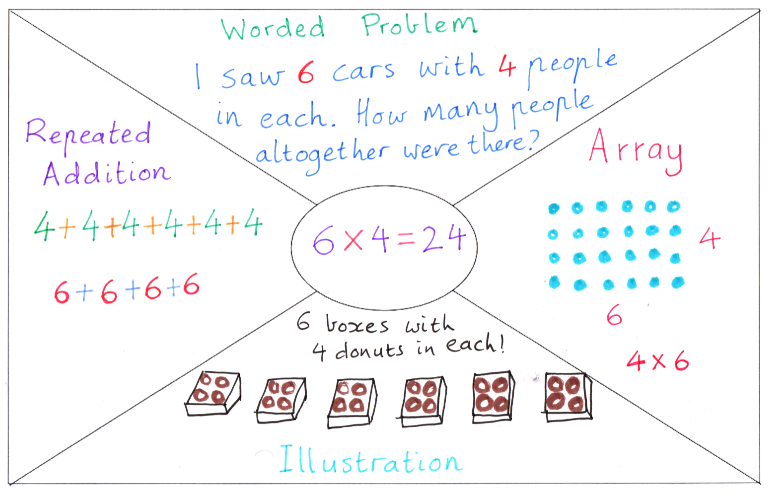
Can you use the vocabulary list below to improve the worded problem section of your think mat?
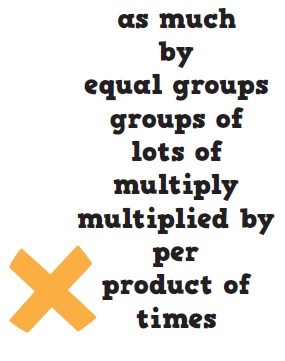
Please upload this piece to Google Classroom by 1 pm on Friday.
Success Criteria:
I can choose a multiplication problem that challenges my level of ability
I can represent multiplication in at least four different ways
I can use vocabulary that relates to multiplication
Challenge: How would you explain multiplication to someone?
Create a poster or record a video that would help someone else understand multiplication better.
MY NUMERACY: (40 minutes)
Learning Intention:
We are working on our personal Mathematics goals through My Numeracy
Task: Log onto My Numeracy on Essential Assessment and complete the multiplication goals first.
If you have time, you can work on other goals in My Numeracy or go onto Sunset Maths.
Science
STATES OF MATTER PROJECT: (40 minutes)
Learning Intention:
We are demonstrating our understanding of the three main states of matter
Task:
If you need to review the states of matter, log into ClickView and watch this video.
You will use your Science time this week and next week to plan an experiment or presentation that demonstrates the properties of one or more states of matter.
You will have two weeks to prepare your experiment to present during Webex Essential next week.
When conducting your experiment, you MUST plan responsibly and safely.
Check with your parents before using any heat source, potentially dangerous liquid (e.g. cleaning or cooking products) or sharp or heavy objects.
This will be reviewed in your Webex Essential sessions next week on Thursday and Friday.
Success Criteria:
I can demonstrate the properties of a state of matter in an experiment or presentation
I can categorise materials by observing their properties
I can safely set up and present an experiment
P.E. / Movement breaks:
Learning Intentions:
We are learning to practise a range of PE skills, such as punting and underarm roll
We are learning how to measure our heart rate
The aim of this choice board is to let you choose what you would like to do!
It is designed for you to have fun, develop your fitness and skills and encourage you to be happy and healthy.
Task:
For each day, you need to complete one of the following activity boxes.
When you complete all the activity boxes, you can have a go at some of the activities again.
Please click here to use the ‘Equipment Replacement list’ to help you create a range of sports equipment at home using household items.
Fitness/Sports Choice Board
|
Scavenger Hunt:
Find all the common household items in the link here. When you find each item, check it off your list and have a go at doing the matching exercise.
Challenge: Time yourself and see how quickly you can complete the |
12-Minute Challenge:
In this activity we are looking at what happens to our body when we participate in sustained activity that requires our heart to work fairly hard. Before we start this activity, we are going to learn how to measure our heart rate. Click here
What to do: Select an activity that you can maintain for 12 minutes that you know will increase your heart rate. For example: running, doing step ups , star jumps, skipping or any other similar type of activity.
Use a timer on a watch, iPad, iPhone or another device to keep track of the 12 minutes – setting an alarm is a good idea. Try to push yourself to keep working at the same intensity for the whole 12 minutes – you will start to feel tired but don’t give up!
Questions: Optional – Send your answers to the questions below including your heart rate measured after the 12-minutes exercise to either Mr M or Mrs Yue-Lamb via the Sentral Parent Portal.
|
GoNoodle Fun:
Work your way through the following activities. Feel free to repeat your favourite ones.
Release Your Warrior - Click here
Moosemallow Dash - Click here 100 FAST: Jumping Jacks - Click here High Velocity - Click here
|
|
Punting a Football:
|
Tabata:
Tabata is a form of high intensity interval training that consists of eight or more sets of fast paced exercises performed for 20 seconds with a brief rest of 10 seconds. The purpose of training in this way is to build our muscular endurance.
Muscular endurance refers to the ability of the same muscle or muscle group to be used for an extended period of time without undue fatigue. The higher your level of muscular endurance, the fitter you are.
What to do: See how many rounds of Tabata you can complete. How many rounds of Tabata can you complete each day? Click here for your Tabata workout!
Questions: Optional – Send your answers to the questions below to either Mr M or Mrs Yue-Lamb via the Sentral Parent Portal.
|
Knock em’ Down:
For this activity you need to create a points system for hitting certain targets
You must use an underarm roll to knock down or hit your targets. The distance away from the target can be as far or as close as you would like it to be.
Once you are more confident with your underarm roll, challenge yourself and have a starting point further away.
If you like, send a video of yourself practising the underarm roll to either Mr M or Mrs Yue-Lamb via the
Click here to download your activity.
|
Inquiry – Australian History
FEDERATION - SORTING OUT: (40 minutes)
Learning Intention:
We are demonstrating our understanding of Australian Federation
Task:
Having investigated Federation, you must now design a presentation to show your understanding in an oral format.
Some options include: song, poetry, play, voice recording or an interview. If you have another idea feel free to ask your teacher.
You will present your ‘oral artefact’ about Australian Federation in our Webex Essential Session on Thursday and Friday.
Success Criteria:
I can choose an appropriate oral style to represent Federation
I can demonstrate my understanding of the significance of Australian Federation
I can include facts about Australian Federation in my presentation
Self-Reflection:
This lesson will be reviewed during Webex Essential on Friday.
READING REFLECTION: (15 minutes)
Learning Intention:
We are reflecting on our progress on our reading goals
Task:
We will conduct a reading goals self-reflection in our Webex Essential session on Friday morning.
Specialist Classes:
Click here for the Specialist options.
Answers for Week 7
Fiction Genres: Scoop Private Eye
The features that scoop finds are:
- Audience
- Purpose
- Setting
- Character
- Style
- Story-line
Realistic Fiction
A plot that can actually happen and is true to life. The character has a problem or goal. Realistic steps are taken to solve the problem or meet the goal. The resolution is true to life.
Realistic characters with possible problems. They make mistakes, just like you and me.
Settings can be modern or historical. It is realistic and believable. It may be a real place or a made up place. It seems familiar to us, like the place where we live.
The theme applies to real-life situations. Actions that are taken by the characters make the reader realise something about his or her own life. Sometimes it teaches a lesson.
Historical Fiction
Characters are real or realistic. Some characters may be real people from the past. All characters dress, speak, and act like people from that time period.
Setting is a time and place from the past. The story is set in a specific time period from the past. The place is real or realistic; it looks and feels real.
The plot is real or realistic. Some or all of the events may have really happened. Made-up events are realistic; the events could have happened.
Accuracy of the historical detail is evident.
May include author notes on research.
Conflict allows us to compare the past with the present in order to better understand our world.
Maths
‘Repeated Addition and Skip Counting’
3 x 5= 5+5+5 5 x 3 = 3+3+3+3+3
6 + 6 + 6 + 6 = 4 x 6 4 + 4 + 4 + 4 + 4 + 4 = 6 x 4
7 x 2 = 2+2+2+2+2+2+2 8 + 8 + 8 + 8 = 4 x 8
24, 32, 40, 48, 56, 64, 72 - Counting forwards by 8
66, 77, 88, 99, 110, 121, 132 - Counting forwards by 11
4, 7, 10, 13, 16, 19, 22 - Counting forwards by 3, starting at 4
11, 17, 23, 29, 35, 41, 47, 53 - Counting forwards by 6, starting at 11
© Copyright Laburnum Primary School
